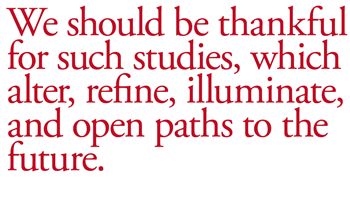“180””
The scientific process is the opposite of dogma. Continual reexamination and correction are expected, desired. Restudying questions by other hands often refines, improves precision, but seldom leads to upheaval of what are accepted as basic general truths. We shall herein consider three recent examples of medical science corrigenda. They might at first glance seem to constitute “18Os†but upon closer examination they really deepen our understanding by exploration of particular facets of the issues under study.
We all know that the liver is the canary of the body with reference to alcohol, the organ that is first damaged by any excess of consumption. Illness and death from abuse of alcohol usually result from liver disease. It would, therefore, be, to understate, astonishing to learn that alcohol could benefit the liver. A report eight years ago did astonish and mystify by demonstrating that regeneration of rat livers was enhanced by light alcohol consumption, as compared to the livers of abstemious rats. Now we have researchers from the Mayo Clinic, Duke University and Kanazawa University Hospital in Japan reporting that “light to moderate alcohol consumption may protect against the development of hypertranaminasemiaâ€, that is, against elevations of blood levels of transaminase. (Such an elevation is a sign of liver damage.) Studying nearly 12OO men without liver disease, Suzuki, et al., found over five years that those who drank moderately had less evidence of liver damage than those who did not drink at all or who drank minimally. Heavy drinkers showed the most damage – no surprise.
The J-shaped curve still rules, as was also reported in a Danish study of liver disease some years ago. Age and obesity were thought to play roles, but I found those aspects of the data confusing. Neither study gave any hint of a possible mechanism of alcohol’s benefit. Nevertheless, the findings are intriguing, counterintuitive and, dare I say, encouraging.
The cardiovascular benefits of moderate drinking are voluminously documented, most dramatically as the French paradox, so it is surprising to see publication of human research that reports an adverse effect of moderate alcohol consumption upon the heart.
A group in Rome reports that alcohol abolishes ischemic preconditioning of the heart. Ischemia, insufficiency of blood supply due to arterial narrowing, when severely involving the coronary arteries that bring oxygen to the heart muscle, may cause a heart attack. Lesser episodes of ischemia have been thought by some to precondition the heart: get it somehow accommodated to ischemia so as to reduce the damage from a later, larger insult, a sort of training to weather the blow. (This may sound to some like the contention that one would tolerate sitting in a pot of boiling water if placed there when the water was still cold.) The Romans fed half the volunteers five ounces of gin (4O grams of ethyl alcohol) 3O minutes before treatment for isolated coronary artery narrowing. The other half received five ounces of water! Measurements revealed that ischemic preconditioning was abolished in the group receiving alcohol. My instinct, and that of my consultant cardiologist, is to reserve our alarm until more studies have been done.
One doesn’t often think of teeth being affected by alcohol, unless of a fist as a vector. A special case is that of individuals who have wine in their mouths for much of the time, for example, a wine buyer who must taste many wines every day. The teeth of such folk are at risk of dissolution by the acidity of wine. Now, however, we are presented with a most interesting study showing that grape polyphenols, the same class of compounds that is so often reported beneficial to health, may effectively prevent dental caries (cavities). Here it is not the alcohol that’s the effective agent, but components of grape skins and seeds, which become components of wine and, more concentrated and cheaply available, of pomace. The primary microbial culprit in the pathogenesis of dental caries is the oral bacterium Streptococcus mutans, which possesses at least two specific virulence traits for the formation of the biofilms on the surface of teeth that cause cavities: ability to synthesize particular polysaccharides; ability to produce and tolerate acids.
Studying the effects of the phenolic compounds of pinot noir, cabernet franc, baco noir, and noiret on S. mutans, scientists at the University of Rochester and the New York State Agricultural Experiment Station of Cornell University at Geneva, New York, found both essential virulence traits to be effectively disrupted, oddly without compromising bacterial viability. Prophylactic potential may be enormous. How about preventive use of a pomace extract?

